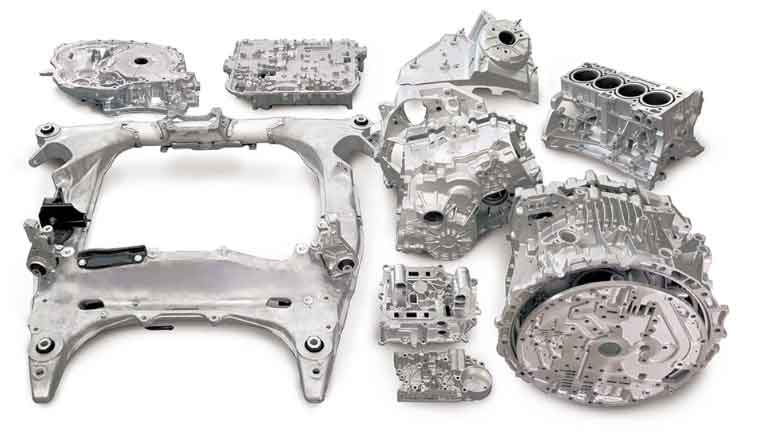Die casting is indeed a high-speed and efficient manufacturing technique widely used in various industries. It offers several advantages that contribute to its speed and efficiency. Here are some key factors that make die casting a fast and efficient manufacturing process:

- High Production Speed: Die casting is known for its high production speed compared to other casting methods. The process involves injecting molten metal into a die (a reusable mold) under high pressure. The molten metal fills the die cavity rapidly and solidifies quickly, allowing for fast cycle times and high production rates. This makes die casting suitable for large-scale production runs.
- Complex Shape Replication: Die casting enables the replication of complex shapes and intricate details with high accuracy. The die cavity, made of steel or other durable materials, is precisely machined to match the desired part geometry. This allows for the production of intricate and detailed components, reducing the need for additional machining or finishing operations.
- Dimensional Consistency: Die casting offers excellent dimensional consistency from part to part. The use of precision-made dies ensures consistent part dimensions and tight tolerances. This eliminates the need for extensive post-casting machining or adjustments, reducing production time and costs.
- High Strength and Precision: Die cast components exhibit high strength and precision due to the pressure applied during the casting process. The high pressure helps in achieving a dense and uniform structure, resulting in parts with excellent mechanical properties and dimensional stability.
- Minimal Material Waste: Die casting minimizes material waste as it employs a closed-loop system. The excess material from the casting process can be recycled and reused, reducing material costs and environmental impact. Additionally, the high precision of die casting minimizes the need for material removal through machining, further reducing waste.
- Automation and Robotics: Die casting can be highly automated, utilizing robotic systems for various tasks, such as die lubrication, part extraction, and trimming. Automation increases production efficiency, reduces labor costs, and ensures consistent quality.
- Secondary Operations Integration: Die casting can integrate secondary operations within the process itself, further enhancing efficiency. Operations such as trimming, drilling, tapping, and surface finishing can be incorporated into the die casting process, reducing the need for additional handling and setup time.
- Versatility of Materials: Die casting can be performed with a wide range of metals and alloys, including aluminum, zinc, magnesium, and copper-based alloys. This versatility allows manufacturers to choose materials based on the specific requirements of the application, such as strength, weight, and corrosion resistance.
The combination of high production speed, complex shape replication, dimensional consistency, strength, and minimal material waste makes die casting a highly efficient manufacturing technique. It is widely used in industries such as automotive, aerospace, electronics, and consumer goods, where speed, precision, and cost-effectiveness are crucial.
